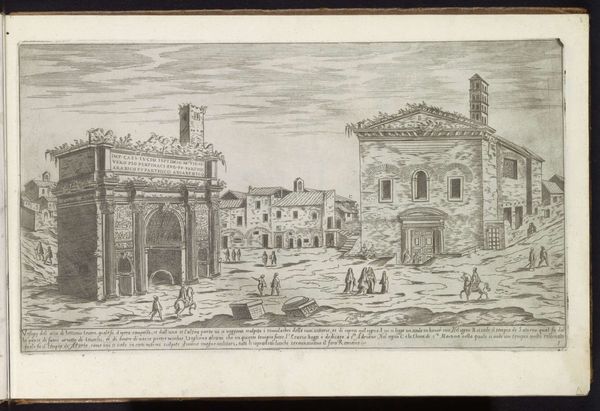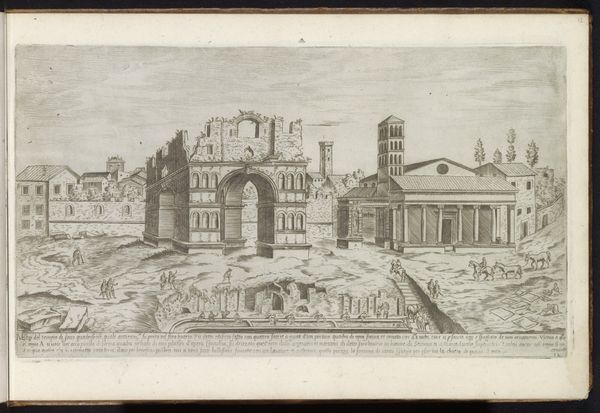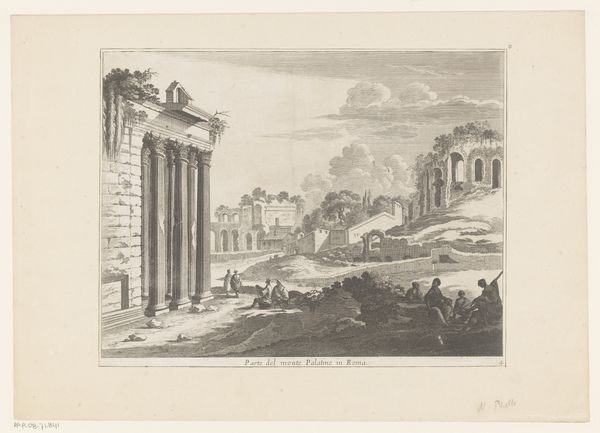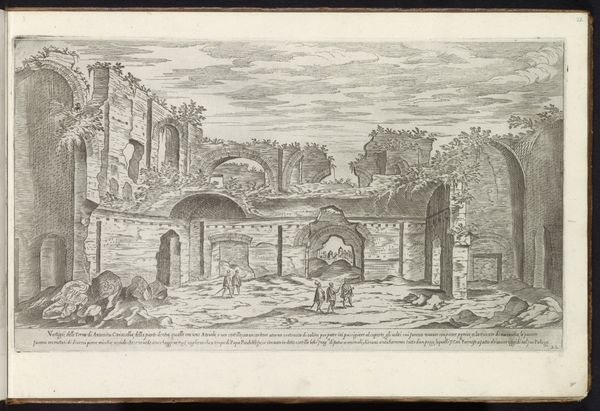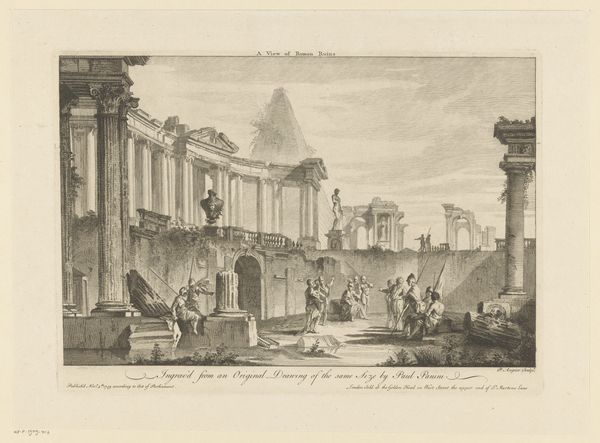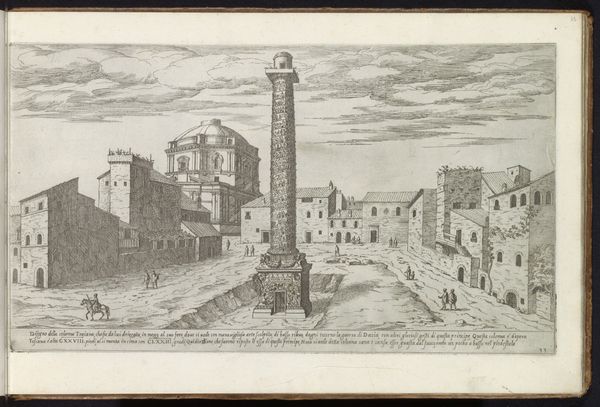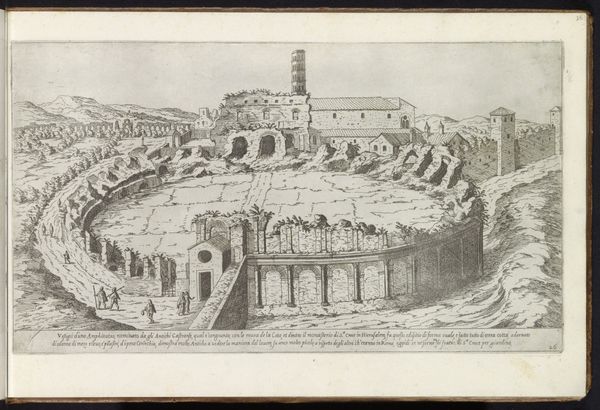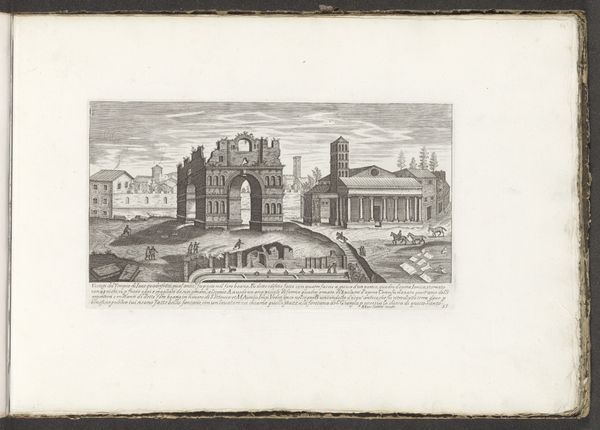
Ruïne van de Tempel van Antoninus en Faustina en de Tempel van Romulus op het Forum Romanum 1575
0:00
0:00
drawing, print, ink, engraving
#
drawing
# print
#
perspective
#
mannerism
#
11_renaissance
#
ink
#
cityscape
#
engraving
Dimensions: height 215 mm, width 381 mm
Copyright: Rijks Museum: Open Domain
Curator: This is Étienne Dupérac’s 1575 engraving, “Ruins of the Temple of Antoninus and Faustina and the Temple of Romulus in the Roman Forum.” Editor: The ruins lend the composition such a melancholic air, don’t they? All those crisp lines meticulously detailing decay… it's compelling. Curator: Absolutely. Dupérac created this cityscape during a time when Rome was a popular subject for artists eager to document and reimagine its layered history. Ruins had powerful symbolic value; in many ways they represented the fall of empires, the mutability of power, and a meditation on the transience of human achievements. Editor: He masterfully uses perspective, directing the viewer's eye from the temple in the foreground deep into the heart of the forum. The buildings and human figures progressively diminish in size to reinforce depth, highlighting the almost geometric composition of architectural components as the most stable part of this picture. Curator: Yes, Dupérac wasn’t just interested in accurately depicting the ruins, he was making a statement. Note the human figures populating the space. By showing people, including what appear to be wealthy elites riding through the streets, going about their daily lives amidst the wreckage, Dupérac is illustrating a sort of continuity between the past and the present. Despite the visible decline, life—and inequality—persists. Editor: I can also appreciate the sharp contrasts created by the engraving technique. The interplay of light and shadow defines form and surface texture and accentuates architectural details like columns and friezes. This is not merely documentary; it's about imbuing structure with emotional weight. Curator: It's a stark visual reminder of what was, and an urgent prompt to engage with what is. He is calling into question whose histories get told, and by whom. The visuality of inequality, decay, and power speaks directly to current political dialogues and cultural discourse around collective memory. Editor: It makes you wonder, what ruins of our own time will artists be documenting centuries from now? Curator: Indeed. It also leaves me considering what we can learn from how we choose to document and present this and similar cultural heritage from different points in history.
Comments
No comments
Be the first to comment and join the conversation on the ultimate creative platform.

